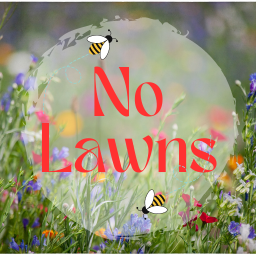

I’m active in that community but agree there’s too much negativity there, and too much negativity in general. It seems to be improving over time, though.


I’m active in that community but agree there’s too much negativity there, and too much negativity in general. It seems to be improving over time, though.
My background is in permaculture but there’s significant overlap between that and solarpunk. My point of view is that permaculture and/or solarpunk work at the individual level. They work even better at the household level, and even better at the community level, even better nationally, and best internationally.
You don’t have to change the whole world to be successful. You’re not responsible for the entire world, only your own actions. So be a part of the solution, lead by example and persuade others to do the same. But you’re not expected to carry 8 billion humans on your shoulders, all the other animals, the trees, the weight of all of the oceans, etc. People only believe this because it gets repeated incessantly but take a step back and realize how obvious it is that you can’t be expected to be personally responsible for basically all of existence. You’re not omnipotent. Let go of weird expectations that anyway are probably promoted by fossil fuel types to overwhelm people into inaction.
Be responsible for your own actions, be part of the solution, and let go of the rest.


SunZia is a megaproject by almost any measure. Pattern executives estimate that SunZia will generate enough power for three million homes. That’s three times as much energy as what’s produced by the largest wind farm currently in operation, the 1-GW Great Prairie Wind project in Texas. There are only six power plants in the entire country with a larger listed capacity than 3.5 GW.
Wow!
I would love it if we could treat this as a competition, to see who can build the lowest carbon-cost electricity service. A region of India has a competition like this, where villages do earthworks projects for rainwater infiltration and reforestation. The result is massive positive change. The same competitive spirit could be extremely powerful if applied to energy generation.


We use a simple homemade compost toilet, saving 150kg of climate change emissions per person each year, and instead of creating sewage, we create compost.


Hence why I said to purify it, and I only mentioned propane in the context of cooking, which is virtually if not always off-grid, so no piping.


As an additional (future) option, I love the idea of creating biochar, capturing the resulting syngas, and purifying the syngas for use as a plug-and-play alternative to propane compatible with their existing cookware.
I think this is sound from ecological and social standpoints. Propane is basically a byproduct of fossil fuel refinement, and as that goes away, so too, will propane, leaving behind a ton of wasted cookware etc. including the embodied carbon in its manufacture. By replacing the propane with another gas that’s a byproduct of sequestration rather than fossil emissions, we save the embodied carbon and financially incentivize sequestration, while the people with cultural attachments to gas cooking can continue on.
DNS, web, mail, WireGuard, etc. I wrote the webserver in about 700 lines of Go and the other software is by other people. Currently I’m rewriting everything in Rust and will write an authoritative DNS server in Rust. Eventually I want all my services to run on my own software (except for WireGuard, which is best in-kernel).
My first professional mailserver was around 1996, with 400 users, up to over 3000 users by 2001. It was awesome then but now mail is the last thing I’d recommend anyone self-host. The ecosystem has been deteriorating for decades at this point.
Pathogen destruction is a function of time and temperature. Generally speaking, a compost bin at 140F/60C for an hour will kill most pathogens, or 130F/55C for a day, or 120F/49C for a week. And generally, compost bins will hold a peak temperature for between 24-72 hours before slowly dropping again, while adding fresh material will make the temperature rise again. Part of the reason time matters is because it isn’t just heat that kills pathogens - it’s also compost microorganisms that physically kill pathogens in the bin.
Getting compost very hot like 160F/71C like you say will kill pathogens quickly but it’s not only unnecessary, it’s also harmful, as a lower temperature will result in a more diverse culture of bacteria in the finished compost. Personally I aim for about 140F/60C.
And anyway, note that I said above 120F. It sounded like the GP was having issues with their compost that made me think that 120F would be a reasonable target to shoot for given their current situation.
Love the biking and zazen!
I did really well last winter then got out of the habit when it got warmer (I have a thing about smells).
Can you describe your setup? A properly maintained compost bin doesn’t smell at all.
How to make one: take some fencing (you can get it for free from Craigslist) and make a bin a little over 1 meter tall and roughly 1 or 2m around, outside, on top of soil. Put dead dry plants or leaves inside on the bottom at least half a meter deep. That’s your sponge material to keep certain things from leaking into the soil. Now it’s ready to start taking inputs like toilet material, kitchen and yard scraps, dead animals, etc. Form a hole in the center with a pitchfork or other tool and put all inputs into that hole. Then put cover material on top of the freshly added material. Good cover materials are hay, straw or leaves, and they prevent smells. This cover material should also be present on the sides of the bin. Finally, get a compost thermometer and stick it in the middle of the material. The goal should be to get the temperature above 120F/49C. This will take a good amount of material and consistently adding it through the winter.


Here’s a video showing Brad Lancaster’s permaculture house in Tucson, AZ:
https://youtu.be/KcAMXm9zITg?t=1715
I linked directly to a spot showing him getting good water pressure with only 2.5 feet (less than a meter) of head.
In other parts of the video he talks about filtration. You can watch the video yourself, it’s awesome. I hope it inspires you.
It sounds like the place you lived is not a great example of rainwater harvesting and greywater, like they didn’t really know what they were doing and cobbled together something mediocre. Do you think that water issues in Flint, Michigan are an indictment against the conventional water system? Or in India? I don’t blame you for having a bad personal experience with something and concluding that that thing is bad. That’s just how it goes. But take a step back and realize that the questions you have are solved problems. It’s just that most people are unaware and many are resistant to change.
The fact that the conventional water system is starting to run out of water in some desert areas, and that the problem is growing, is proof in itself that this system is unsustainable. So we need less pushback and more engaged interest.
Quoting Wikipedia from the Central Arizona Project article:
“The 456 billion gallons (1.4 million acre feet) of water is lifted by up to 2,900 feet by 14 pumps using 2.5 million MWh of electricity each year, making CAP the largest power user in Arizona.”
That is not simple at all.
“The canal loses approximately 16,000 acre-feet (5.2 billion gallons) of water each year to evaporation, a figure that will only increase as temperatures rise.”


I think you’re best suited to answer your own question. Since you’re the one who wants to build nuclear, why don’t you do it?
If the answer is expertise, no problem, just hire people.
If the answer is money, just band together with others. Online discussions always have tons of people who want the same thing you do – you can pool your resources.


You can ask him, or read his book. He’s spent decades working on water.
Have you installed and used rainwater harvesting and greywater systems? It sounds like you haven’t. They’re remarkably simple.


Doable but not necessarily with a lower impact.
According to Rainwater Harvesting for Drylands and Beyond (volume 1, 3rd edition) by Brad Lancaster, page 249, an example household doing water harvesting and reuse, saves between 80kWh and 97kWh per month and between 174 pounds (78.8kg) and 211 pounds (95.5kg) of CO2 emissions. That’s a huge win for rainwater harvesting and greywater.
Rooftop solar and wind also save a ton of water since traditional generation methods of burning fossil fuels need lots of water.
And according to the same book, page 240, here are some kWh/gallon ranges of various water sources:


I agree but just want to add that at least some people in apartments and condos can still produce and use solar-generated electricity. Here’s a cool example:
Although I have rooftop solar producing around 200% of our usage annually, I was inspired by this story and have been increasingly using our offgrid LFP (LiFePO4 / lithium iron phosphate) backup batteries with solar panels to power certain things.
I think people in apartments would need rooftop access (ideally), equator-facing windows or a balcony, at the very least, for this to make ecological sense as there’s a carbon cost to manufacturing batteries and solar panels. But it’s doable and some people are doing it!
Here’s another:


Tucson, Arizona in the Sonoran Desert receives more rainfall annually than the amount of water sourced municipally. In other words, even in a desert city like Tucson, there’s no need to import water. We are wasteful not by nature but by habit, and that can be changed. Rainwater harvesting with thoughtful usage, mulching and locally-appropriate plants and greywater provide all the water necessary except in the most extreme environments such as Death Valley. But even in Death Valley a single family home could provide all its own water through the above if they were also doing solar distillation and reuse.
With proper management and cultural development, cities can provide all their own water and energy and a substantial portion of food.


I have about 10 sunroot patches in different spots and love it!
It’s super easy to plant: push a shovel into the ground, wedge it forward to open a crevice in the soil, drop a sunroot in, and carefully pull the shovel back out. Pat the soil down with your foot. No need to dig a hole! Give it some mulch, and if you live in a dryland area, give it some shade as well.
Easy to harvest: they’re mostly just under the plant stalks and are easy to get to and pull out.
Easy to propagate: just harvest some and eat them. If you like them, take some harvested tubers and plant them somewhere else.
Basic cooking recipe: wash and then boil some sunroots for at least half an hour and mash them. Add a little whole wheat flour, some shredded onion, an egg, and a little baking soda and mix. Put some mix into a skillet like a thick pancake and cook similarly, but a bit longer. The flavor is very mild so you can top it with guacamole or a lightly cooked sunny-side up egg or whatever you like. I bet some soy sauce mixed with chili pepper sauce would be nice.
Here’s a video from Canadian Permaculture Legacy showing how to make Ukrainian Deruny with sunroot instead of potato:


Definitely, and I’d recommend green onion if you like it because you can “start” it by replanting the roots from store-bought green onion. Just cut off the bottom 2 inches (almost 10cm), plant it, and eat the top part.
If you’re going to have houseplants, you may as well get some food from them.
Next steps are going to be ground cover
But everything is going to be native 100% to include the ground cover plants.
Excellent! Heavy mulch + diverse living ground cover is a powerful combination. In my yard you can see the difference between locally-appropriate “native” plants and those that aren’t, as the former just grow and grow, and the latter struggle and require tons of babysitting. I’m slowly letting them die to open up space for plants that actually want to live here. Lesson learned.
When choosing fruit trees, please consider local diseases. For example in the beginning I bought an apple tree from a local nursery, not knowing it was susceptible to fireblight (prevalent in my area). Lo and behold, this year we’ve had lots of rain and that tree is dying from fireblight (I’ve removed the dying parts and will just cut the whole thing down in winter). Starting around 2019 or 2020 I began planting apples and pears that are naturally resistant to fireblight and they’re doing great. So, call some local arborists and ask which fruit tree diseases are prevalent in your area. Skim the wikipedia pages for those diseases to get a sense of what they are, and then look exclusively for trees that are resistant to those diseases. Spend 2 hours to save 2 years (and money too)!
I ate a pawpaw once and it was incredible. They need a lot of shade when young, and unfortunately don’t seem to grow well in my area.
Sorry but I’m not ready to post pics of my place yet, too shy for that.


Proper composting not only destroys seeds, it also kills pathogens like e. coli and salmonella while even breaking down things like diesel and TNT.
There’s a ton of misinformation about composting and I think the central cause is that multiple decomposition methods that produce different results are all lazily called composting by lay people.
As an example, composting uses biological heat produced by thermophilic microorganisms (mostly bacteria) to destroy pathogens etc. and which eat the material to produce compost. Worms, used in vermiculture, do not raise the temperature, have much less success destroying pathogens, and produce worm castings, which are physically distinct from compost and typically sell for around 10x the price.
I’ve even seen discussions where people think that fire, which produces ash, is compost. Like… you can see a pile of compost, and a pile of ash, and literally can’t tell the difference? Add water (and oxygen) to compost and you’ll get compost tea for plants and trees. Add water to ash and you’ll get lye used in drain cleaner products. They are not the same.